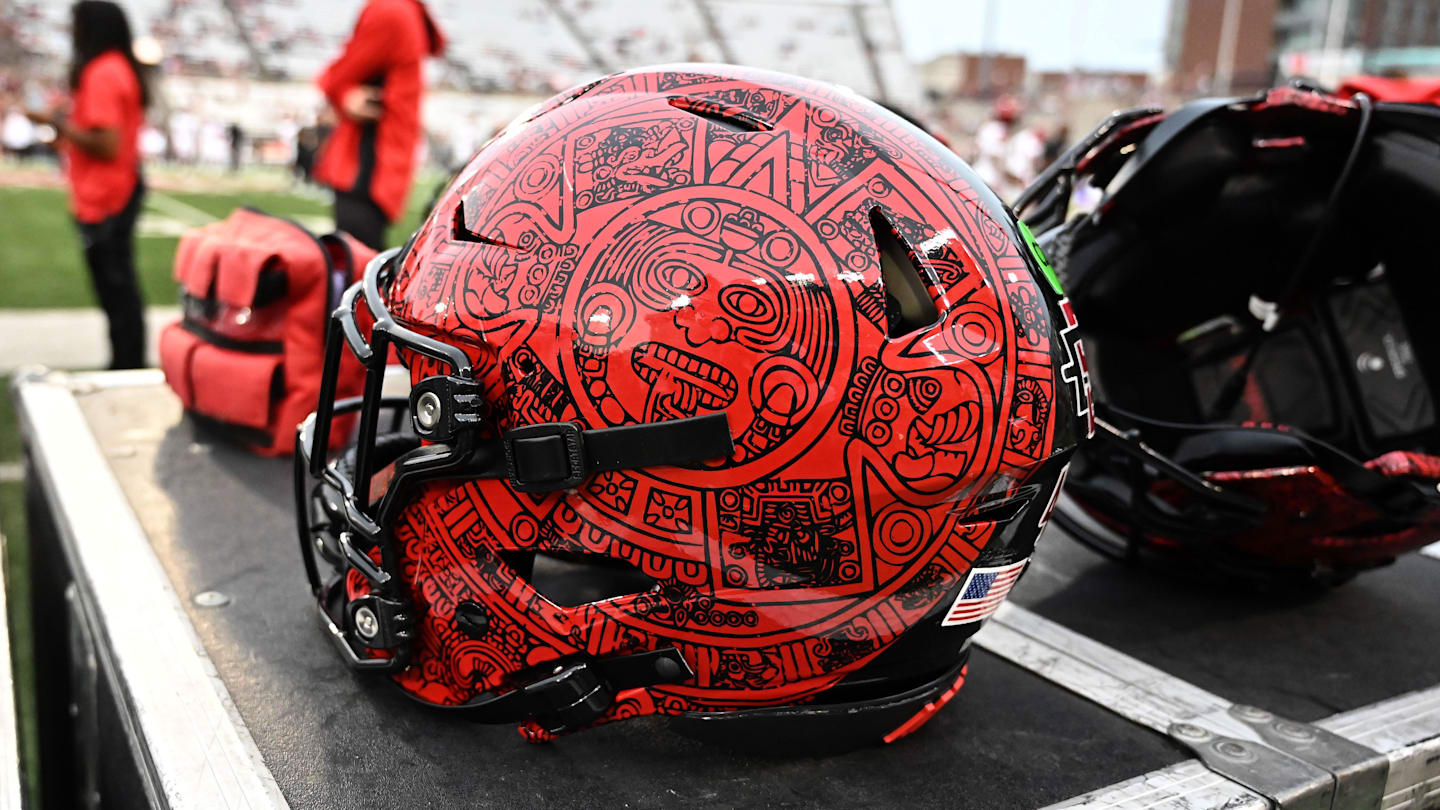San Diego State already honors its Aztec heritage with one of the coolest helmet designs in college football, which depicts the Aztec Sun Stone, or calendar.
Now SDSU is introducing expanded Aztec iconography that will be incorporated into athletics branding to extend the ways the university honors its Aztec identity.
Aztecs fans will get to know glyphs known as Ehecatl, Ocelotl and Calli as soon as Friday night. The glyphs have been painted into the end zones at Snapdragon Stadium for the Mountain West opener against Colorado State.
The Aztec Sun Stone contains numerous hieroglyphics that carry multiple meanings in Aztec culture, and SDSU is introducing three new glyphs that will serve as secondary athletic logos.
The school chose the three glyphs to align with SDSU’s mission and values of education, health and community.
Ehecatl (Wind): Represents Quetzalcoatl, the feathered serpent, god of intelligence and self-reflection. Linked to the value of education and the cultivation of the mind.
Ocelotl (Jaguar): Represents Tezcatlipoca, god of the night sky, memory, and time. Associated with power, valor, and brave warriors. Linked to health, grit, and perseverance.
Calli (House): Represents Tepeyollotl, god of animals, caves, echoes, and earthquakes. Symbolizes rest, family, and community. Linked to community and pride.
“The main goal was really to help the SDSU community and the broader audience understand the authentic and inclusive and positive interpretation of SDSU’s Aztec identity,” SDSU President Adela de la Torre said in a release. “One of the things that was really unique about this is we looked deeply into the historical elements so that we could connect the positive aspects of Aztec culture with the values of SDSU.”
Athletic director John David Wicker said it was the next logical step to educate people on some of the symbols in the sunstone.
“We want to educate our fan base on what these three icons meant to the Aztecs, and how that translates to our athletic department and what it means to us. We are excited to explore all the different ways we can use it, but the first step is to get it rolled out,” Wicker said.
In May 2018, as part of the formal Aztec Identity decision and report, SDSU announced it would keep the Aztec but would no longer refer to the Aztec as the university mascot. It retired both the image of an Aztec warrior, which was deemed culturally insensitive, and the human mascot, both of whom were informally known as Monty Montezuma.
Since then, the university has not had a visual representation of its Aztec identity. The expanded iconography helps to meet that need, honoring the richness of Aztec history while also delivering on the promise made to the campus community to develop new visual art and symbols, the school said.
During the past few years, the Aztec Identity Initiative Governing Board, the Aztec Culture and Education Committee, and SDSU Athletics began developing the expanded iconography. They interviewed leading Mesoamerican scholars from both Harvard and Cornell Universities, as well as researchers from SDSU, to ensure a clear understanding of the many ways the glyphs have evolved over time and are currently invoked.
“These glyphs truly capture the three pillars of Aztec and Mexica culture that have defined SDSU’s engagement with our Aztec identity since 2018,” said Ramona Perez, director of SDSU’s Center for Latin American Studies and chair of the Aztec Culture and Education Committee.
SDSU has unveiled expanded Aztec iconography that will appear on athletic uniforms, gear, and within university athletic venues.
The three glyphs – Ehecatl (Wind), Ocelotl (Jaguar) and Calli (House) – expand SDSU Athletics’ visual identity.
Info/FAQs: https://t.co/GhFFATyNeZ
— San Diego State Aztecs (@GoAztecs) October 2, 2025
“Through the glyph of Ehecatl, we affirm our commitment to accessible education; through Calli, our dedication to community involvement and connection; and through the glyph of Ocelotl, our focus on health. Combined, these symbols make visible the values that define our university. We are grateful to the scholars, consultants, and the artist whose respect, care, and expertise ensured these elements of Aztec and Mexica culture are represented with honor and accuracy.”
All three glyphs have been stylized to be unique marks for SDSU, while retaining the essential defining elements of the original ancient forms. An artist from Coahuila, Mexico, Noe Silva, known for his work rooted in Mesoamerican heritage, was selected to do the adaptation. Silva has also designed official cultural seals for Mexico and is widely recognized for his artistry tied to Indigenous traditions.
The glyphs will be seen on uniforms and other athletic gear, and in venues.



